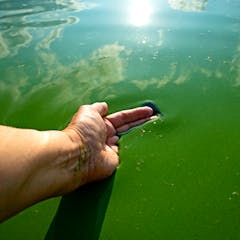
Articles on Ecosystem restoration
Displaying all articles

Australia committed to restore 30% of degraded ecosystems by 2030 when we signed the global biodiversity framework. But what does that really mean? It’s open to interpretation. So let’s be ambitious.

Despite its 500-million-year history, the plant-fungi alliance holds mysteries that, once unravelled, could revolutionise agriculture and ecosystem management.

Crofters who have managed the land for centuries are being offered dubious rewards to risk their rights.

Technologies such as remote sensing and artificial intelligence are making it easier to gather more accurate data on biodiversity. Developing these digital tools will help vital ecosystem restoration.

Plantations of exotic trees from the mid-19th century onwards devastated Indian ecosystems.

Building a culture where fire is respected rather than feared is essential to maintain resilient landscapes.

Fascination with shiny technological gadgets may divert scarce resources from the on-the-ground approaches we need to restore degraded ecosystems around the world.

Many of our rivers are overloaded with nutrients from fertiliser run off and wastewater. Algal blooms, fish kills and poor water follow. One solution? Nutrient offsetting.

Native plants help damaged landscapes by stabilizing soil, fighting invasive species and sheltering pollinators. Two horticulture experts explain what they’re doing to help develop new seed sources.

Australia still feels the thylacine’s presence in its landscape, wildlife and culture. A new book explores everything we know about the thylacine and the hope of a return.

Conservation practitioners and policymakers must organize and prioritize the management of habitats around whether species are more beneficial or harmful to biodiversity.

Cities are starting to restore natural systems such as waterways, wetlands and bushland. But restoration on the scale these systems need to function properly calls for a rethink of urban planning.

Tasmania’s emus were hunted to extinction in the mid-1800s but we could have them back – and their return could help other species survive climate change.

Fifty years ago, the Salton Sea was a draw for boaters and fishermen; today it’s an ecological time bomb. Two water experts who served on a state review panel describe its proposed rescue plan.

Polar bears and wolves may get the glory, but small predators like weasels, foxes and their cousins play outsized ecological roles. And many of these species are declining fast.

Governments, scientists and conservation groups are working to protect 30% of Earth’s land and water for nature by 2030. Two scientists explain why scale matters for reaching that goal.

Governments, industrial and development companies and scientists need to take a leading role in finding strategic solutions to the cumulative threats impacting our freshwater ecosystems.

Exposure to diverse microbes boosts our immunity, while spending time in nature restores wellbeing. And COVID reminds us of the risks of new viruses when we intrude on and degrade natural habitats.

For decades, Indonesia’s mangroves have been degraded or turned into aquaculture. But there are signs of progress, with a new focus on restoration and income-generating alternatives.
